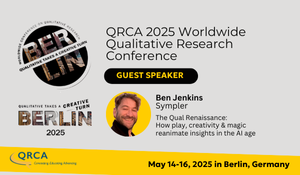The magic of imagination as method: Making our dream worlds real in research
“Everything you can imagine is real.” – Pablo Picasso
It’s easy to get caught up in our routines, and miss the moments of joy and beauty that are present everyday. Many of us don’t often have the opportunity to take a quiet moment to let our imaginations run wild. Some people are naturally imaginative, getting lost in daydreams, and fantasy worlds, never losing the magic and lightness of child-like wonder. For others, this imaginative inclination gets buried outside our awareness or reach. What do we lose when we leave behind our childhood imaginary worlds? What happens to those imaginary friends? Everything goes somewhere when it’s lost. Where did they go? Where does that imaginative capacity disappear to?
Deep down, we yearn to let our creativity uncover not just an understanding of what is or what isn’t but what could be. When we allow our imagination of what could be flow unconstrained by practicality and the limitations of our circumstances, our minds and hearts open, and what we share challenges us to think – and to want and need – differently. This can be a powerful entry point for brands to resonate with these newly imagined needs and wants. Can more magic be cultivated in the connection brands have with people and the relationship we, as qual researchers, have with our participants? Can our dream worlds become real?
In qual research, we can offer the gift of imagination. I say “gift” because our respondents revel in being asked to imagine, and they often express sincere gratitude for the opportunity to explore and exercise the latent creativity we all possess to some degree or another. Some are timid initially, anxiously explaining that they’re “not artists” or “creatives” – they see themselves as just regular people and artists as people who possess something special and unattainable. Yet, you needn’t be an artist in a formal sense to use your imagination. We all possess the capacity to dream, and to dream big, if we’re brave enough to let loose, even a little bit.
Our task as qual researchers who want to give the gift of imagination, thus sparking more dynamic and interesting responses, is to create devices that feel like easy and natural access points for igniting the imagination.
Here are two techniques we offer – opposite approaches, both rooted in imaginative form:
Turn your dreams into world-making.
Mired as we are in the practical realities of everyday life, it can be difficult to imagine alternative worlds. We don’t often get to do world-making imaginative work, but it can be some of our most joyful, exciting, and mind-opening experiences. Crafting a vision of a radically different world can reveal not just the wildest hopes, dreams, and aspirations of our respondents; it also offers a window into the consumer experience. Consumers are often at least somewhat dissatisfied with the products they use, brands they encounter, and categories. They just might accept mediocrity or settle for something less than awesome because they don’t see an alternative. Asking consumers about their absolute ideal provides brands with clear direction to break category molds, differentiate themselves, and connect more deeply with consumer desires—even those that consumers might not yet know.
Tell me your absolute worst nightmare.
Imagination isn’t always about imagining ideal or dream scenarios and world-making. Sometimes it’s about the worst things we can imagine, world-shattering, even dystopian scenarios that get at the challenges, fears, struggles, and barriers our respondents experience or dread. For example, we used the following prompt in a study on the daily life of commercial truckers: “Imagine you wake up in a cold sweat. You’ve had one of the worst nightmares of your life. Everything you dread and fear in your job trucking has come together in a perfect storm. What happened? How did you feel? Tell me all about it in all its horrifying detail.” Imagining and articulating a horror story can create an opening for remarkably rich insights, propelled by passionate emotion.
When we allow ourselves and our participants to explore the boundless realms of imagination, we uncover hidden desires and anxieties that can guide brands toward more meaningful and innovative solutions. The practice of imagination becomes a bridge between what is and what could be, helping us to see beyond the constraints of the present and envision a future filled with possibilities.


